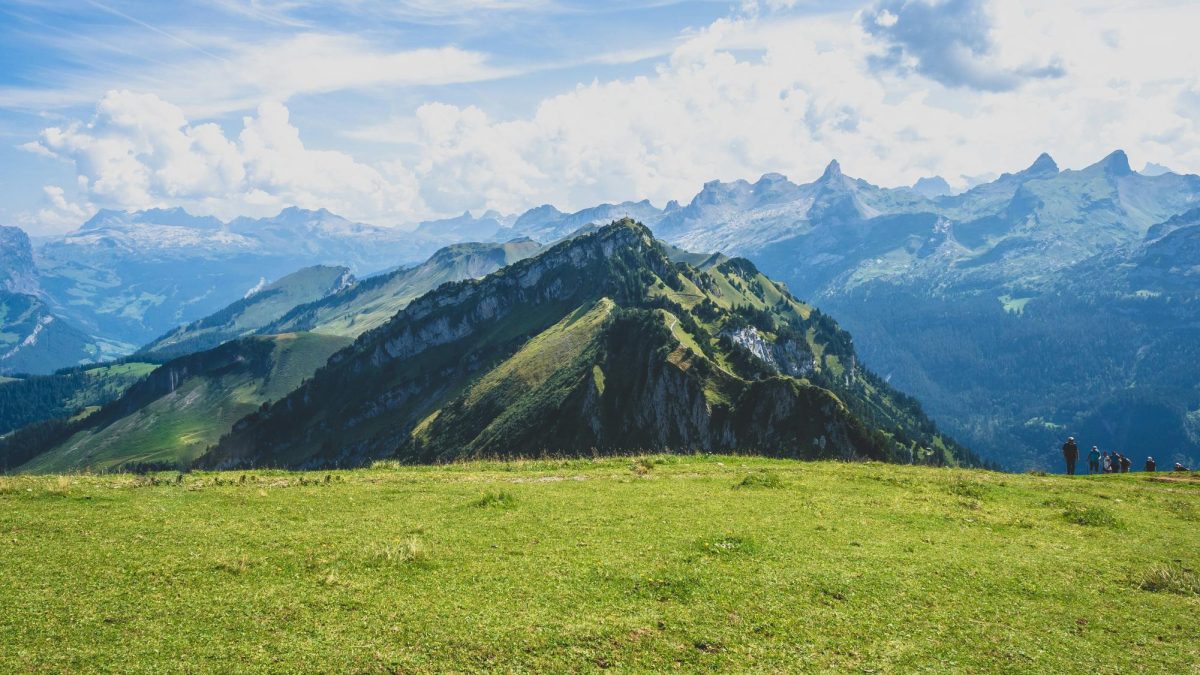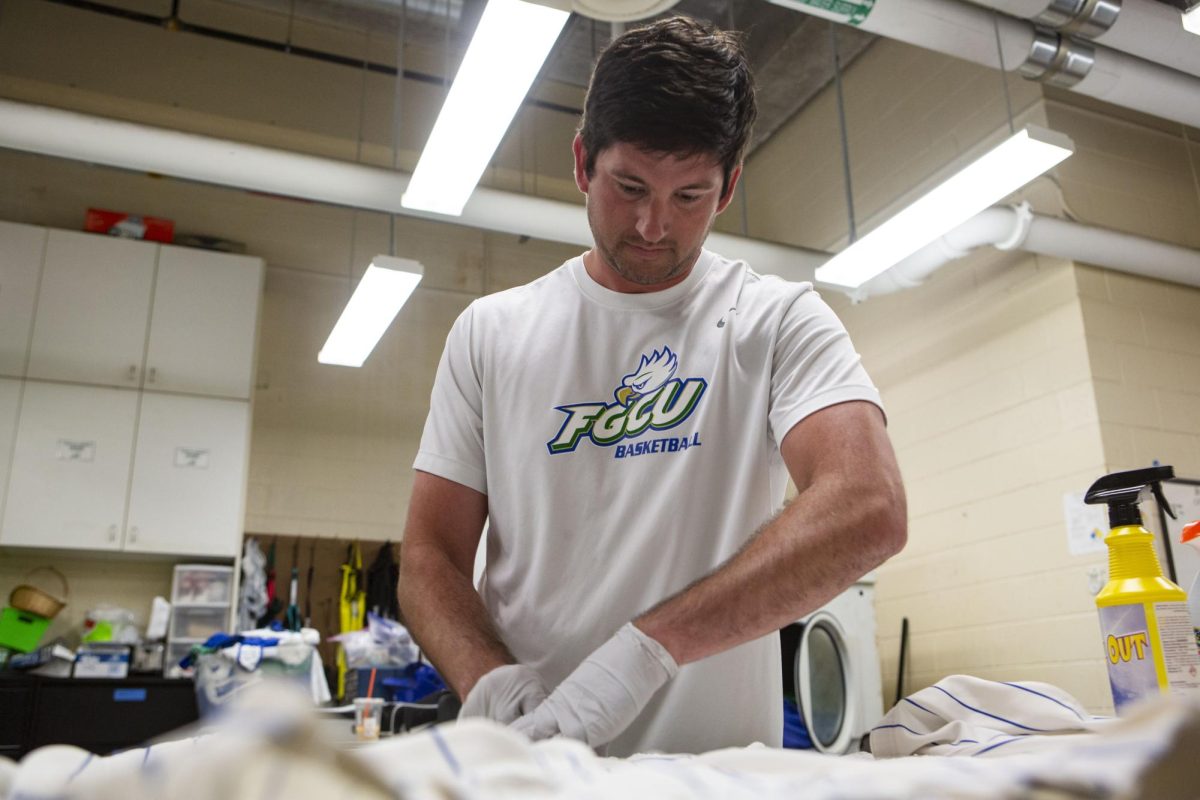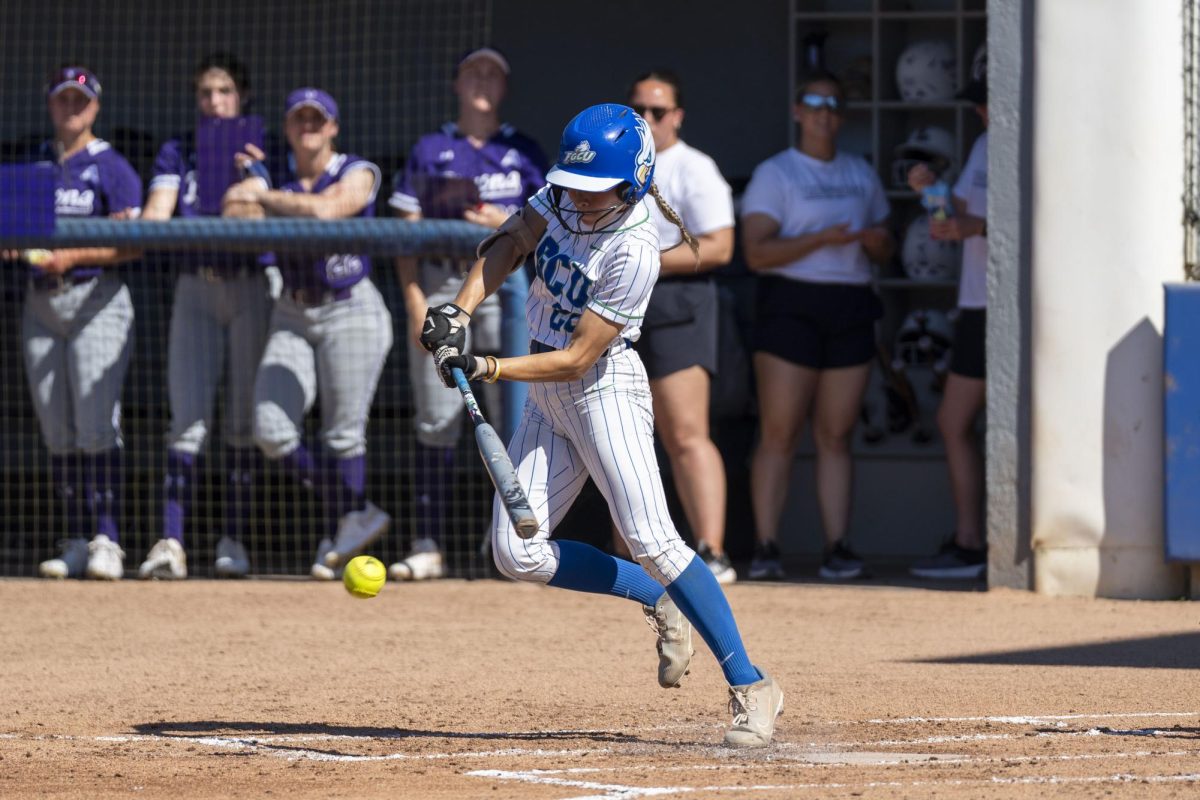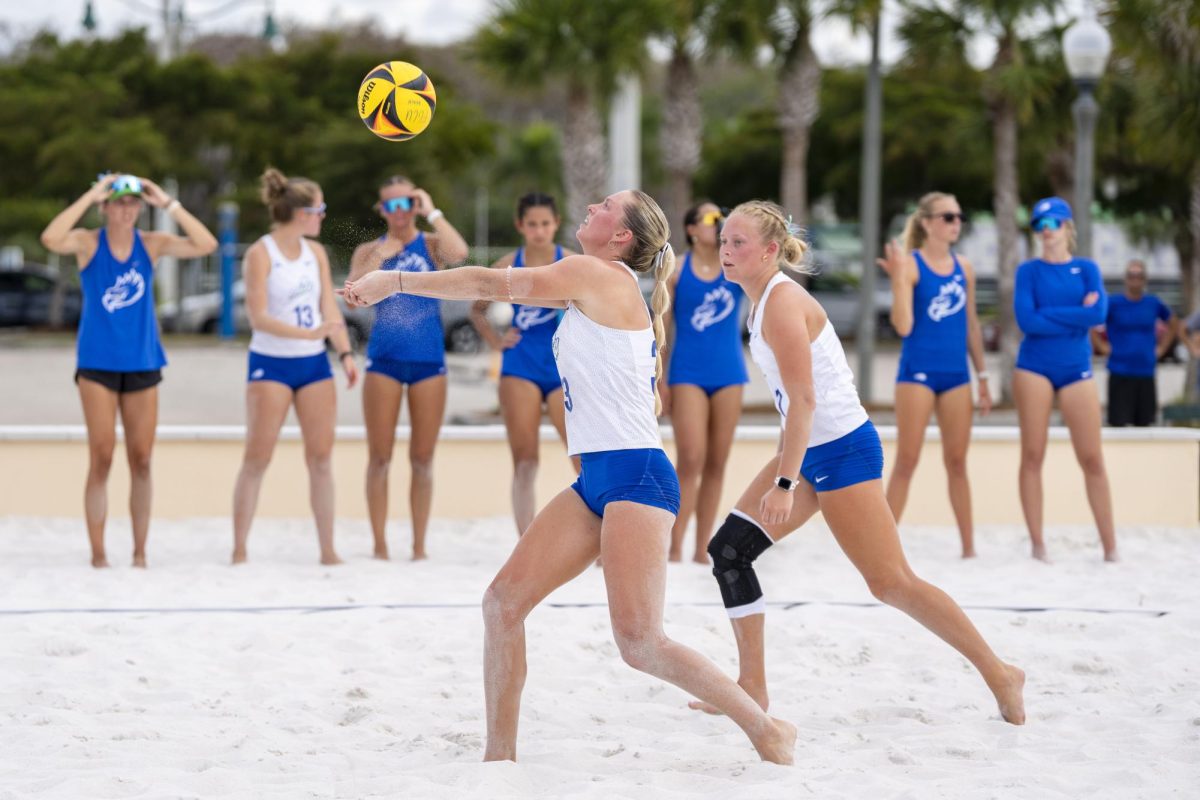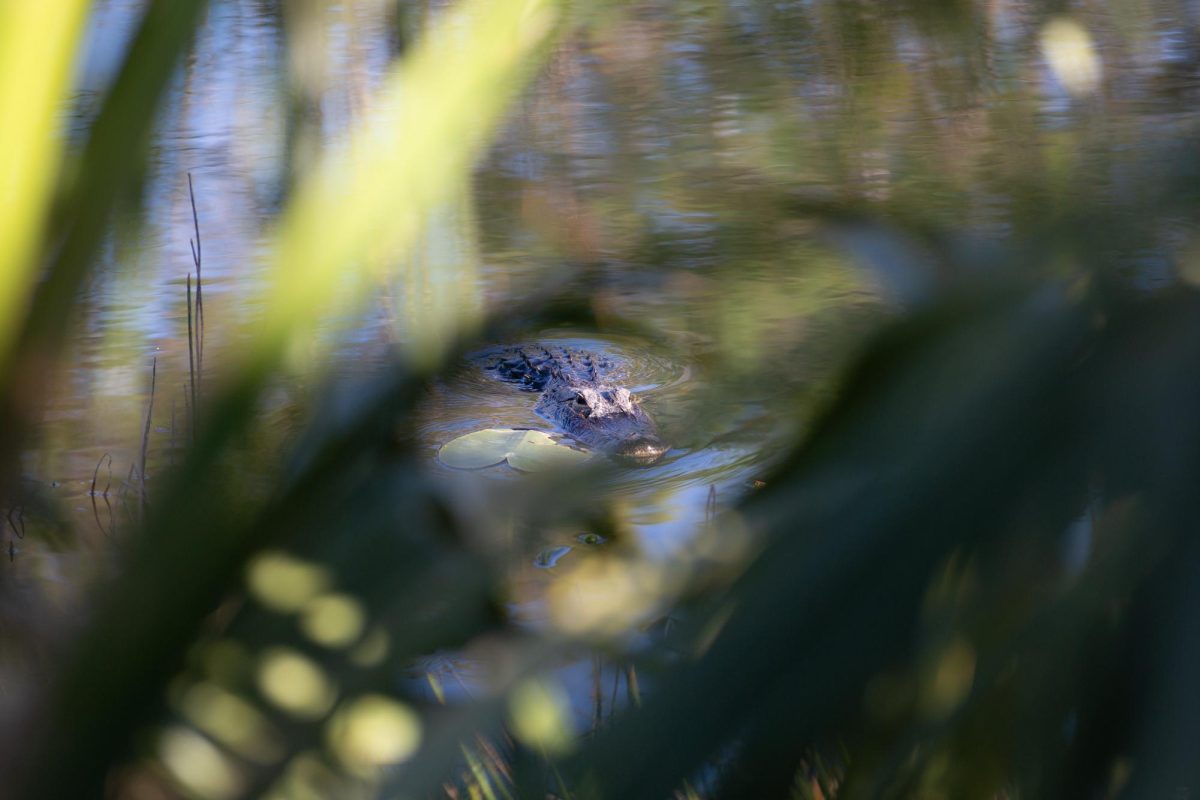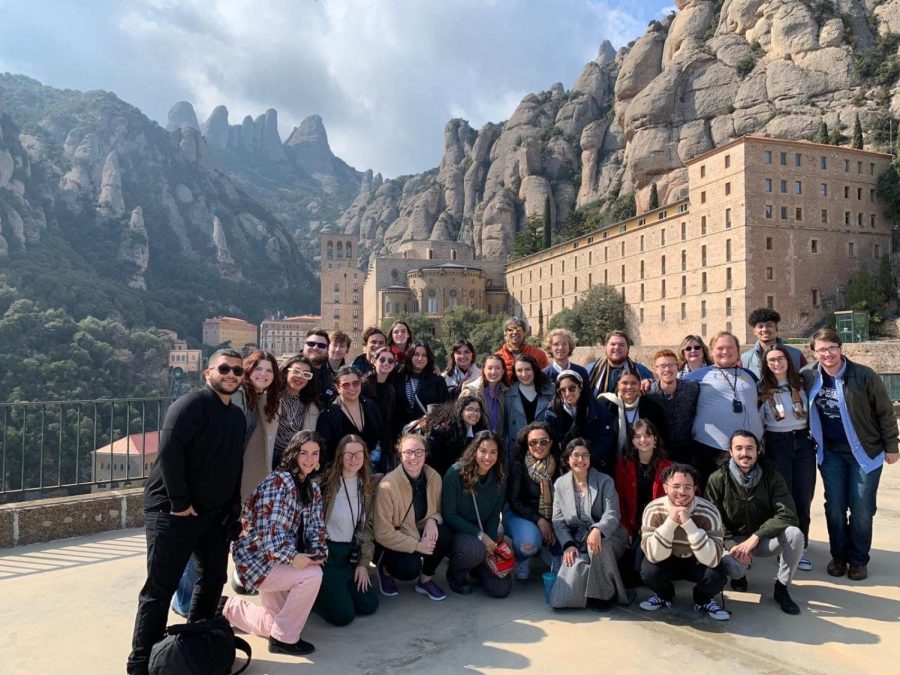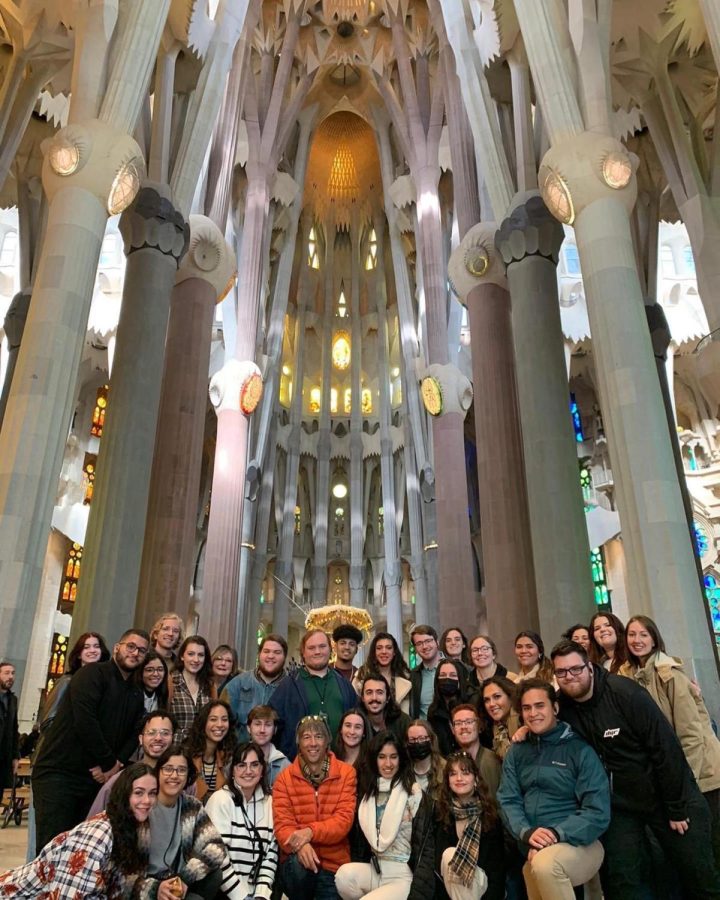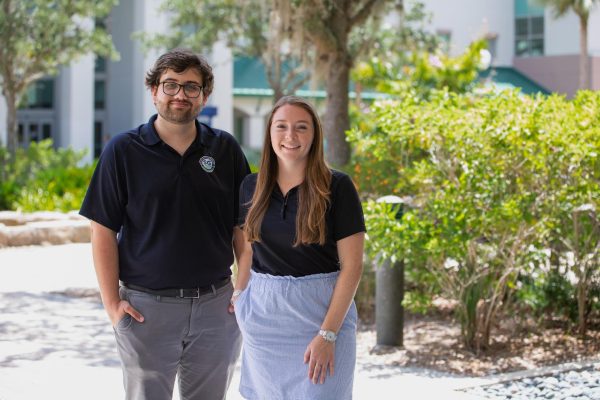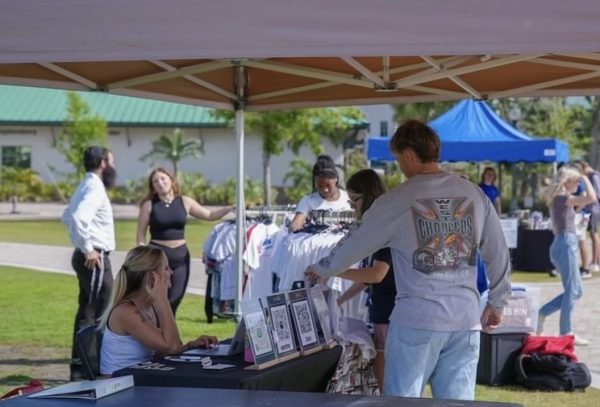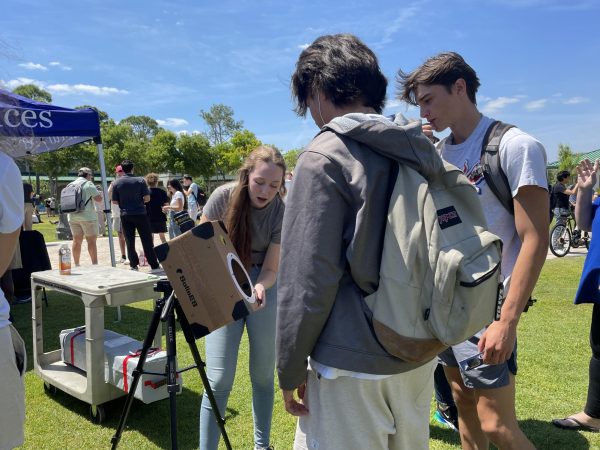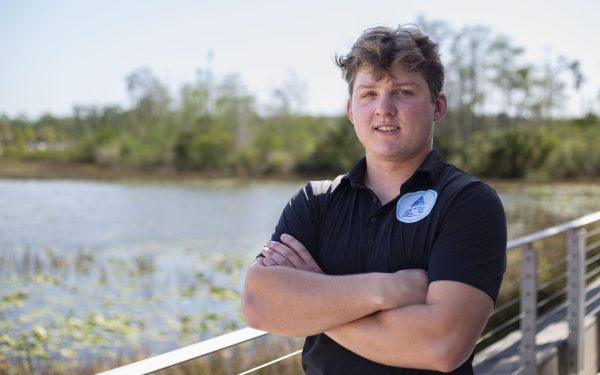Unforeseen Circumstances Forces a Prolonged Stay During Chamber Choirs European Tour
FGCU’s chamber choir performed around Europe as part of their American Celebration of Music in Spain and France tour. Photo courtesy of Kelsie Gibb/FGCU Choirs Facebook page
April 20, 2023
FGCU’s chamber choir prepared for their European tour months prior to departure. They planned their tour, “American Celebration of Music in Spain and France,” with Music Celebrations International (MCI). Their spring break was filled with performances in multiple European cities.
Dr. Trent Brown, choir director and associate professor at the Bower School of Music, has done trips like this with FGCU’s chamber choir four times before. He said his favorite part is giving students the opportunity to travel and perform where music was designed to be performed.
“Sharing those opportunities and hearing their response and seeing them react to the things that they experienced, you know, really just creating that opportunity for students to do that is what I find the most rewarding,” Dr. Brown said.
The group of 35 left on March 2 and flew from Miami International Airport. They landed in Madrid, Spain on March 3. From there they took a connecting flight to an airport in Barcelona.
Dr. Brown and Dr. Debra Darnell, professor and head of vocal studies, were the chaperones of the trip.
Kelsie Gibb is one of many students in the chamber choir that have been anticipating this tour. Gibb has been in the chamber choir for three years now. Although she’s a senior studying psychology at FGCU, she went to a performing arts high school and has continued singing as a hobby.
“I didn’t really think we were going to have another tour, but just because how much COVID had been impacting travel,” Gibb said. “So my junior year, at the end, [Dr. Brown] was announcing interest in a tour, so he got a lot of our opinions on where to go.”
Payment for the trip was received prior to the trip, covering hotel fees and meals. Some students received scholarships from donors to cover a majority of the travel expenses. The chamber choir hosted a Bon Voyage concert as a way to thank the donors for believing in their talent.
“They’ve hosted this Bon Voyage for us whenever we’ve gone on tour,” Dr. Brown said. “It was really the first time that we presented it for people. And then we left and we did it many, many, many more times through the span of the week.”
When landing in Barcelona on Friday March 3, they started their itinerary right away. The group met their MCI tour manager, Silvia Moura, at the airport. The group then went on a panoramic tour of Barcelona’s highlights including Gothic Quarter, Plaça del Rei, Roman City, Plaça Reial and Port Vell, Poble Espanyol and Montjuic.
They had dinner to gain energy for their first performance at La Sagrada Familia Basilica, also known as architect Antoni Gaudí’s unfinished church. La Sagrada Familia Basilica is the largest unfinished Catholic church in the world. There’s hopes to complete the church by 2026, one century after Gaudí’s death.
The chamber choir rehearsed for their performance then participated in the mass. They performed their first show of American Celebration of Music in Spain in the crypt of the La Sagrada Familia Basilica for a crowd of forty to fifty people.
“We went up to do a half-set performance,” Gibb said. “We basically sing the entire set, because he’s like ‘Encore! Encore!’ Dr. Brown made us encore for every performance we had. We sang basically every song we had for almost all of the performances.”
On Saturday March 4, the group had a guided tour of the Eixample Quarter, a location of many of Barcelona’s best Modernista buildings. They also went back to La Sagrada Familia.
“We went and saw the La Sagrada Familia inside,” Gibb said. “That was amazing; that was like walking into heaven. All of the stained glass and everything was amazing… you can’t describe what it looks like in person.”
After lunch the group took a guided tour of the Spanish Village and viewed the city from Montjuic, a shallow hill in Barcelona, rich with history. After sightseeing, they rehearsed and performed at the Church of Pi as part of the American Celebration of Music in Spain for a crowd of seventy to eighty people.
“There was one man sitting in the front who was crying and he actually sent us a message after that,” Gibb said. “Every time I looked at him, I just like felt more encouraged about singing there because we’re singing songs in their native language. Like, I was nervous because I’m not the strongest Spanish or French speaker. Singing Spanish in a crowd that knows what you’re saying, is completely different from seeing Spanish in a crowd where most of them probably don’t know I’m saying.”
Dr. Brown said the man emailed them and said he wasn’t planning to attend, but saw the flyer while walking past the church and came in. He said the man said wonderful remarks about the quality of the performance.

“Performing is a very vulnerable experience,” Dr. Brown said. “You take this thing that you’ve practiced, and maybe you’ve created it, and you share it with people, and you hope that you get a positive response. It’s even a little bit more frightening when you’re doing that in a foreign land, you don’t know anyone, you don’t know maybe some customs or traditions.”
“But it’s really cool how music unites, you know, how our students were able to take the the work that they had done, and share it with others,” he continued. “And then after the concerts, make those connections with people and talk with them. And without the music, they wouldn’t have had that opportunity to connect with other people.”
On Sunday March 5, they woke up early to attend mass at La Sagrada Familia, where they were given a last-minute opportunity to perform.
The group went on an excursion to Montserrat. They spent half the day sightseeing in Montserrat to visit the monastery. The monastery, with its church and the various subsidiary buildings, is a little city on its own.
Dr. Brown asked Silvia, their tour guide, to see if they were allowed to sing a song or two there.
“They let us sing, I think two songs and it was just incredible,” Gibb said. “The emotion of being up there and being allowed to sing. Nobody really gets to sing there on a whim, and we just asked randomly, and they let us, and they trusted us to do that, was just incredible. We sounded really good, and it was a really cool space to sing in.”
On Monday March 6, the group were given the opportunity to have a full day of leisure for self-arranged sightseeing around Barcelona. They took an excursion to Sant Cugat del Valles towards the end of the day.
They rehearsed and performed at the Conservatori Sant Cugat lecture hall during their final night in Barcelona.
The group began their journey to Arles, France on Tuesday March 7. They saw Pont du Gard, a 2000-year-old bridge that is a major feat of Roman engineering. They walked on the 157-foot-high waterway.
“It was nice to be able to be like in nature because we had just like been in Spain for so long in the city besides Montserrat, which was like a day kind of in the mountains,” Gibb said. “But here we were.”
They continued to Arles, passing through Uzès, a source of the springs that traveled over the Pont du Gard. The quaint town had a marketplace and several medieval towers.
On Wednesday March 8, the group spent a half-day sightseeing around Arles, focusing on the old Roman portion. They visit the Théatre Antique, a Roman theater that was once a fortress. Its stones were later used for other buildings; its remaining columns are called the “two widows.”
They visited the Arènes, the Roman Amphitheater that is one of the best-preserved monuments of Roman Provence, each arch supported by Doric and Corinthian columns. In summer there are bullfighting contests in the 20,000-seat arena.
“Fun fact, there were tons of cats like everywhere in there that were just running around,” Gibb said. “Same thing at the aqueduct at Pont du Gard.”
They visited the 12th century Église St-Trophime and its cloisters before an excursion to L’Isle sur la Sorgue. They took a short walk to Collegiale Notre Dame des Anges Rehearsal at Collegiale Notre Dame des Anges.
They had their next performance later that night at Collegial Notre Dame des Agnes.
“One of the most touching moments was that there was this older woman in the front row and she’s just dancing,” Gibb said. “And when we sang our French piece, she was singing along with it and someone had to be like shhh, but she knew it and she was so happy. At the end, she kept thanking us.”
Seeing emotional reactions from the audience reassured the chamber choir that they were doing a good job.
On Thursday March 9, they began their trip to Nice, France. They had a guided tour of Aix-en-Provence, including the entrance to the 13th century Cathédrale de St- Sauveur, noted for its 16th century walnut doors, Merovingian baptistry and Romanesque cloisters.
They also toured the Atelier de Cézanne, the perfectly preserved studio of Paul Cézanne, Aix’s most famous son, and the Cours Mirabeau, one of the most pleasant boulevards in all of France, with its overarching trees, rows of old mansions and numerous street cafes.
“It just was a very lively city, it had a market going on and it’s just really cool how much fresh produce and flowers they have at these markets,” Gibb said.
After sightseeing they continued to a mountain village, Le Garde-Freinet. They attended a welcome reception at Eglise Saint Clément before their performance at the Eglise Saint Clément. They then continued roughly an hour and a half to reach Nice for the night.
Friday March 10 was supposed to be the group’s last day in Europe. They took a guided tour of Nice, seeing Le vieux Nice, Chateau, on castle hill with a view of the city.
They viewed the entrance to the Marc-Chagall Museum. Musée National Message Biblique Marc Chagall is said to be the most important exhibition of Chagall’s works including paintings, etchings, lithographs, sculptures, stained glass, mosaics, wall tapestries on Biblical themes.
On Saturday March 11, the group prepared for the trek home. They arrived at the Nice airport, expecting to fly to Madrid at noon and catch a connecting flight to Miami at 4 p.m.
The plane didn’t arrive at the airport.
“Iberia 8727 was nowhere to be found,” Gibb said while laughing. Dr. Brown and Kelly Flynn, the choir president, had to figure out a different way for them to get home. After discussing and sorting through logistics, they came back to the group with a plan.
“[Dr. Brown] was like, ‘Okay, here’s the plan. We either stay here another night and try to catch another flight, but there’s no staff working here, so I can’t communicate with anyone, or we go take this 11-hour drive overnight to Madrid. The bus can get here in approximately 10 minutes or four hours,’” Gibb said.
Gibb said their transportation showed up three hours later, around 8 p.m., and the group drove overnight to Madrid. Since the group was large and it was an unexpected trip, they had to take multiple small vans.
“Travel these days is difficult and I think everyone that’s been in an airport or has been on a flight in the last couple of years, you’ve had your itinerary changed,” Dr. Brown said. “It’s just sort of the way that it is right now. But it’s a lot easier to navigate that when it’s just one person or a family of four. So to have our little family of 34, it created some challenges when our schedule was disrupted.”
However, he said that every problem has a solution.
“We got to the Madrid airport at like 7:30 a.m.,” Gibb said. “We got out, we got our stuff, we went into the Madrid airport, we waited and then he got in line, and he was able to book us flights for Monday the next day at like 11:30 or 12.”
She said the group had a relaxing rest of the day to recover from the overnight travel.
“Everyone in the group went with the adventure, and they had a great spirit about it,” Dr. Brown said. “And they knew that, you know, we weren’t going to have to live in France forever, we were gonna get home at some point, it just might take a little bit longer.”
On Sunday March 12, they were able to fly from Madrid to Miami, arriving in Miami on Monday night. After the 11-hour flight to Miami, they had to drive 2 hours back to Fort Myers.
“We went straight to choir the next day,” Gibb said. “We did a trip wrap-up which was really nice, we talked about what’s coming up.”
The chamber choir has one more performance for the year. They will be performing at the Bower Chapel, 130 Moorings Park Drive, Naples, on April 25 at 4 p.m.
“It was a very special group of people,” Dr. Brown said. “I’m really delighted that I got to spend that time with them. And I hope that it’s something that in a few years and decades later, they look back on with great fondness that it was a big part of when they were here at FGCU.”

